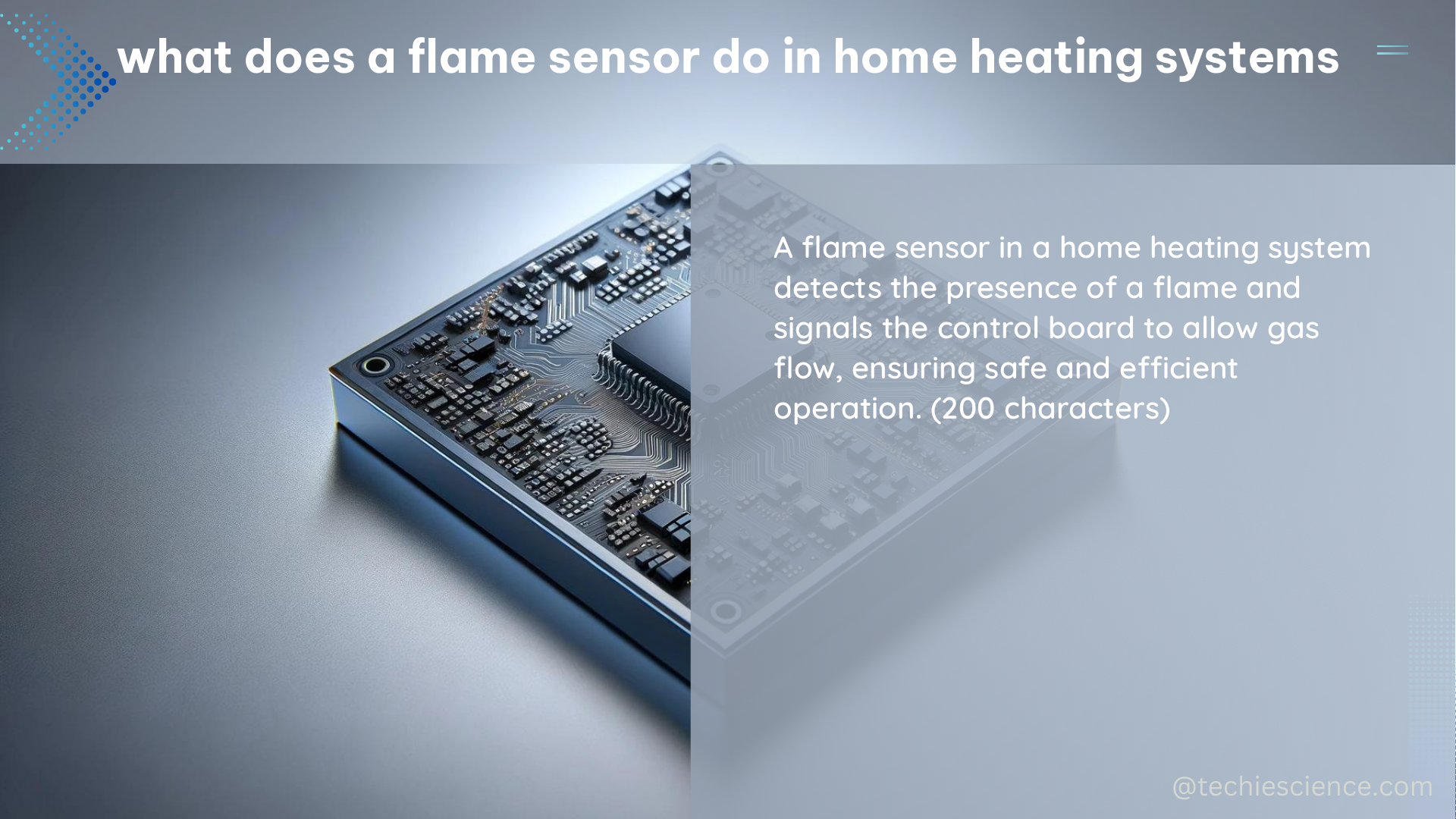A flame sensor is a critical safety component in gas-fired home heating systems, such as furnaces, boilers, and water heaters. It plays a vital role in ensuring the safe and efficient operation of these appliances by detecting the presence of a flame and controlling the flow of gas to the burners.
Understanding the Function of a Flame Sensor
The primary function of a flame sensor is to monitor the presence of a flame in the heating system. It is typically a ceramic-coated rod or electrode that is positioned near the burners. When the burners are ignited, the flame heats the sensor, causing it to glow and generate a small electrical current. This current is detected by an electronic circuit, which then sends a signal to the gas valve, allowing it to open and maintain the flow of gas to the burners.
Technical Specifications of Flame Sensors

Flame sensors have specific technical characteristics that ensure their reliable operation in home heating systems:
-
Resistance: Flame sensors typically have a resistance range of 1-3 ohms when the flame is present. This low resistance allows the electronic circuit to detect the presence of the flame.
-
Voltage: The operating voltage of flame sensors is usually between 5-24 volts, depending on the specific heating system design.
-
Size: The size of flame sensors can vary depending on the application, with diameters ranging from 3mm to 10mm and lengths up to several inches.
-
Materials: Flame sensors are made of materials that can withstand high temperatures, such as ceramics, platinum, and nickel. These materials ensure the sensor’s durability and reliability in the harsh environment of a home heating system.
Testing and Replacing Flame Sensors
Regularly testing and maintaining the flame sensor is crucial for the safe and efficient operation of your home heating system. Here’s how you can test and replace a flame sensor:
Testing a Flame Sensor
- Turn off the power to the heating system.
- Locate the flame sensor, which is typically near the burners.
- Use a multimeter to measure the resistance of the flame sensor. A functional sensor should have a resistance below 5 ohms.
- If the resistance is too high, it may indicate a dirty or damaged sensor that needs cleaning or replacement.
Replacing a Flame Sensor
- Turn off the power to the heating system.
- Locate the flame sensor and disconnect the wires attached to it.
- Remove the mounting screws and take out the old sensor.
- Clean the sensor housing and the area around the burners to remove any debris or buildup.
- Install the new flame sensor, ensuring it is securely mounted and properly aligned.
- Reconnect the wires and turn on the power to the heating system.
Importance of Flame Sensors in Home Heating Safety
Flame sensors play a critical role in the safety of gas-fired home heating systems. They prevent the release of unburnt gas into the living space, which could lead to dangerous situations, such as gas leaks, explosions, or carbon monoxide poisoning. By ensuring that the gas valve only opens when a flame is present, flame sensors help to maintain a safe and efficient heating environment for homeowners.
Conclusion
In summary, a flame sensor is a vital component in gas-fired home heating systems, responsible for detecting the presence of a flame and controlling the flow of gas to the burners. By understanding the technical specifications, testing procedures, and importance of flame sensors, homeowners can ensure the safe and reliable operation of their heating systems.
Reference:

The lambdageeks.com Core SME Team is a group of experienced subject matter experts from diverse scientific and technical fields including Physics, Chemistry, Technology,Electronics & Electrical Engineering, Automotive, Mechanical Engineering. Our team collaborates to create high-quality, well-researched articles on a wide range of science and technology topics for the lambdageeks.com website.
All Our Senior SME are having more than 7 Years of experience in the respective fields . They are either Working Industry Professionals or assocaited With different Universities. Refer Our Authors Page to get to know About our Core SMEs.